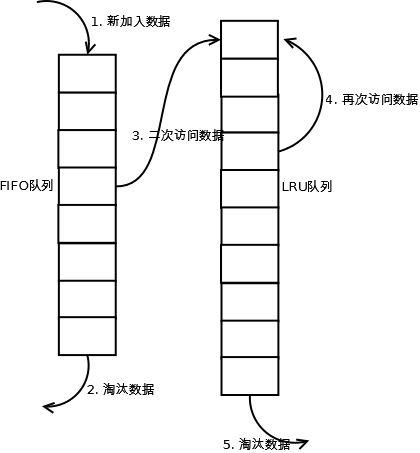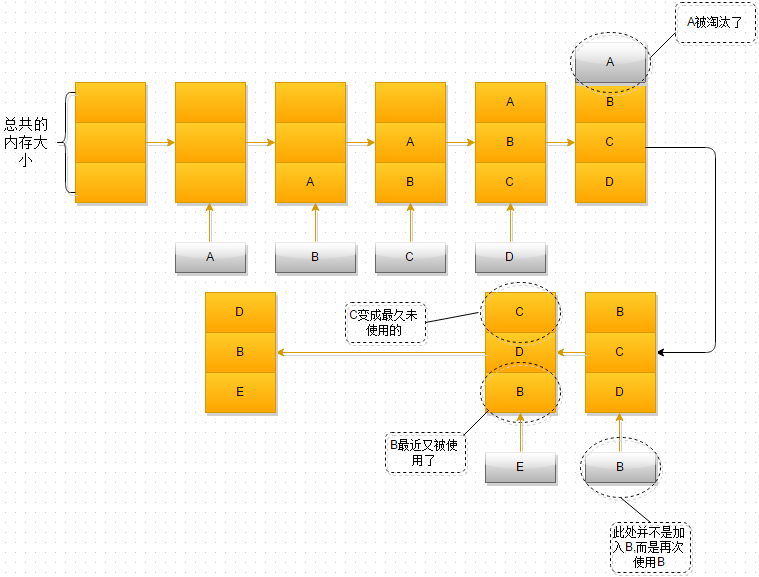一个用hash表作为底层结构的数据库,当然少不了缓存淘汰算法。
LRU(Least recently used,最近最少使用)算法根据数据的历史访问记录来进行淘汰数据,其核心思想是“如果数据最近被访问过,那么将来被访问的几率也更高”。

- 新数据插入到链表头部;
- 每当缓存命中(即缓存数据被访问),则将数据移到链表头部;
- 当链表满的时候,将链表尾部的数据丢弃。
过程如下:

- 最开始时,内存空间是空的,因此依次进入A、B、C是没有问题的
- 当加入D时,就出现了问题,内存空间不够了,因此根据LRU算法,内存空间中A待的时间最为久远,选择A,将其淘汰
- 当再次引用B时,内存空间中的B又处于活跃状态,而C则变成了内存空间中,近段时间最久未使用的
- 当再次向内存空间加入E时,这时内存空间又不足了,选择在内存空间中待的最久的C将其淘汰出内存,这时的内存空间存放的对象就是E->B->D
附上:golang算法
import (
"container/list"
)
//capacity缓存容量
type LruCache struct {
capacity int
cache map[int]*list.Element
list *list.List
}
type Pair struct {
key int
value int
}
func Construtor(c int) LruCache {
return LruCache{
capacity: c,
cache: make(map[int]*list.Element),
list: list.New(),
}
}
//最近访问 提到表头
func (this *LruCache) Get(key int) int{
if elem,ok := this.cache[key];ok{
this.list.MoveToFront(elem)
return elem.Value.(Pair).value
}
return -1
}
func (this *LruCache) Put(key , value int) {
if elem,ok := this.cache[key];ok{
this.list.MoveToFront(elem)
elem.Value = Pair{key,value}
}else{
//先删除最后一个
if this.list.Len() >= this.capacity{
delete(this.cache,this.list.Back().Value.(Pair).key)
this.list.Remove(this.list.Back())
}
//elem = new(list.Element)
//elem.Value = Pair{key,value}
//this.cache[key] = elem
//this.list.PushFront(elem)
this.list.PushFront(Pair{key,value})
this.cache[key] = this.list.Front()
}
}